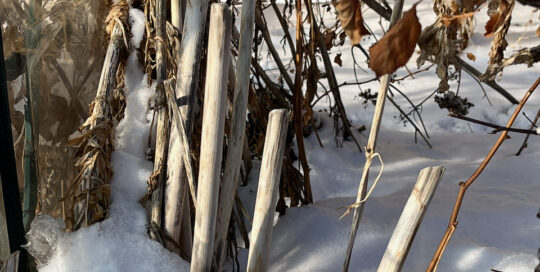Dealing with Thrips
Views: 5152

I’ve never seen a thrip, but I know the damage they can cause. When I helped a friend of mine raise her 3,000 gladiolus flowers, thrips were a constant concern because they could ruin a large amount of the flowers.
Typically the leaves would streak, and many times the flowers wouldn’t even open. Or, if they did, they were twisted and discolored. With all the work glads take to grow, having them ruined by thrips was something we did a lot to avoid.
I think we dusted the corms and emerging plants with Diazinon. Of course, it’s not available anymore. You can use carbaryl (Sevin) in a bag, add the corms and shake them like you’re coating chicken. Dust the plants until they’re about 6 inches tall. You can also use a systemic pesticide, such as Orthene, to control them on nonedible plants.
We also treated the corms before storing them in the root cellar for the winter. Dust them again with Sevin, or I’ve heard of people who soak them for up to 6 hours in a solution of a ¼ cup of Lysol in a gallon of water. Make sure they’re thoroughly dry before putting them away for the winter.
Identifying Thrip Infestation
On the gladiolus it was pretty obvious when we had a serious thrip infestation, but it’s harder to tell on other plants. Recently a friend told me her husband had them on his tomato plants. That’s disturbing because it’s enough of a struggle to grow them around here. The leaves turn dry and brown. And the fruit is often small and/ or deformed. There’s also “ghost spots” – small white areas – on the fruit from where the thrips lay their eggs.
One way you might be able to tell for certain that thrips are the culprits are to set out sticky traps. They are more attracted to the blue ones (versus the yellow), but they’re also harder to see against the blue background. Either way, you’re going to need a good magnifying glass because they’re about impossible to see with the naked eye.
And, keep in mind, just because you have a few thrips doesn’t mean you’re going to have an excessive amount of damage. With the gladiolus we had pretty much a zero tolerance policy because it meant a big difference to the bottom line at the market, but if I were growing them at home I wouldn’t be overly fussy.
Spraying for Thrips
For vegetables, or if you don’t want to go as draconian on the chemicals, you can use a Neem based insecticide or even an insecticidal soap like Safer. While it’s not considered organic, Spinosad is a relatively safe compound used to combat a lot of pests, and can be useful on thrips.
Beneficial insects are also useful in your arsenal against thrip damage. Lacewings prey on them, as well as minute pirate bugs as they feed heavily upon insects (including thrips) in the spring. Greenhouses sometimes release them to control thrips naturally.
Thrips are one of those pests that are frustrating because you don’t see them. You just see the damage, and by then it’s often playing catch up to stay ahead of them. But the good news is the majority of the time they don’t do enough damage to warrant bringing out the heavy chemicals. Just keep an eye out for evidence they’re present, and then decide how far you want to go with the treatment.
(The pretty picture of the gladiolus is from istock copyright Schmitzolaf. I’m going to have to take some macro shots of thrip damage sometime soon to show you.)
Meet Amy Grisak
Amy is a freelance author and photographer in Great Falls, MT who specializes in gardening, foods, and sustainable agriculture. She provides information on every kind…
Amy's Recent Posts

This Little Piggy is a Problem: Dealing with Feral Hogs








